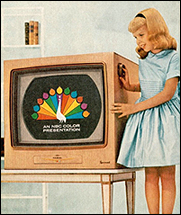I read a press release the other day that was a mix of silly and pointless. A few news sites picked it up and fashioned their own versions. (There won’t be any links because I don’t link to silly.)
Culled from the press release and articles:
Millennials (81%) are much more likely to be influenced by advertising than Baby Boomers (57%), who have generally already set their brand affinity and buying patterns …
I’ve debunked the myth of ‘boomers don’t change brands’ so many times I’ve lost count. A quote from a review of my 2005 book by Dr. Joyce M. Wolburg published in The Journal of Consumer Marketing:
 A second favorite excuse of agencies is: "Baby Boomers don't change brands" (p. 52, italics in original). Nyren dismantles this excuse nicely with examples of brand switching, and he further acknowledges that in cases where loyalty to a brand does exist, marketers who do not target Boomers give them no reason to change.
A second favorite excuse of agencies is: "Baby Boomers don't change brands" (p. 52, italics in original). Nyren dismantles this excuse nicely with examples of brand switching, and he further acknowledges that in cases where loyalty to a brand does exist, marketers who do not target Boomers give them no reason to change.
Read the full review. (PDF)
What’s not mentioned, not even considered, is that 95% of advertising is targeted to Millennials. Of course they would be influenced. And when advertising is directed at a mature demographic, advertisers screw it up so much that we’re offended. (I think I’ve said this a thousand times in my book, blog, speaking engagements, consulting assignments, on street corners drooling and unbathed as I accost unsuspecting passersby.)
Download the first few chapters of the book: Advertising to Baby Boomers PDF
Overall, consumers view traditional advertising mediums — TV, print, and radio — as the most trustworthy, while they view online and social media advertising more skeptically …
What a shock. I’m also guessing that most consumers trust established stores more than some guy in a dark alley with an open suitcase full of watches and whatnot.
A post from a few weeks ago:
Smartphone Ads = Silly Graphical Doodads
 … The mobile/social media soothsayers will have you believe that there is this unknown, magical mode of persuasion that has never been thought of before – and will reveal itself any day now.
… The mobile/social media soothsayers will have you believe that there is this unknown, magical mode of persuasion that has never been thought of before – and will reveal itself any day now.
And lots more, too many more posts:
Social Media - WOMM - Web Advertising
From May 2010:
 Foretellings
Foretellings
… That silly retronym “traditional advertising” will remain the premiere force for introducing people to a product or service, along with sustaining its shelf life. Television, print, radio, and billboard ads will continue to have the visceral power they’ve always had – if only for their sheer size, simplicity, and cutting-edge audio/visual qualities.



 That’s my prediction. Advertisers will finally follow simple common sense, something a certain seer has been urging for years:
That’s my prediction. Advertisers will finally follow simple common sense, something a certain seer has been urging for years:


 … Baby boomers also had a highly negative response to mobile ads ... Fewer than 8% said they were likely to purchase a product advertised on their mobile phone … Overall, just 5.2% were interested in receiving ads on their phone at all …
… Baby boomers also had a highly negative response to mobile ads ... Fewer than 8% said they were likely to purchase a product advertised on their mobile phone … Overall, just 5.2% were interested in receiving ads on their phone at all … NostraChuckus’ Crystal Ball of Common Sense is getting hazy now…
NostraChuckus’ Crystal Ball of Common Sense is getting hazy now… Black Ops Advertising by Mara Einstein
Black Ops Advertising by Mara Einstein Nothing I can think of is as lively and chipper as television in its final throes.
Nothing I can think of is as lively and chipper as television in its final throes. Along with Google Glasses, you'll also be wearing Google Nose and Google Mouth.
Along with Google Glasses, you'll also be wearing Google Nose and Google Mouth. A second favorite excuse of agencies is: "Baby Boomers don't change brands" (p. 52, italics in original). Nyren dismantles this excuse nicely with examples of brand switching, and he further acknowledges that in cases where loyalty to a brand does exist, marketers who do not target Boomers give them no reason to change.
A second favorite excuse of agencies is: "Baby Boomers don't change brands" (p. 52, italics in original). Nyren dismantles this excuse nicely with examples of brand switching, and he further acknowledges that in cases where loyalty to a brand does exist, marketers who do not target Boomers give them no reason to change.